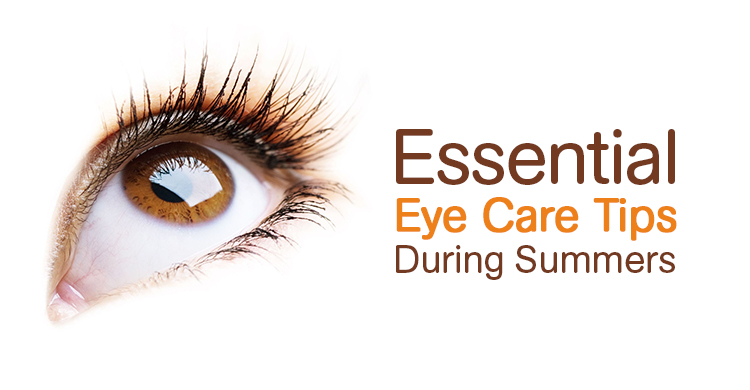Premier Refractive Surgeries in AL: Advanced Techniques at Our Clinic
Premier Refractive Surgeries in AL: Advanced Techniques at Our Clinic
Blog Article
Discovering the State-of-the-Art Technologies Utilized for Detecting and Dealing With Eye Conditions
In the realm of ophthalmology, the development of innovation has dramatically improved the devices available for diagnosing and dealing with numerous eye conditions. From advanced imaging modern technologies that supply detailed understandings into eye structures to robotic-assisted surgical procedures that provide unequaled accuracy, the landscape of eye treatment is continuously progressing.

Advanced Imaging Technologies
Advanced Imaging Technologies have actually transformed the area of ophthalmology by providing exact and comprehensive visualization of the eye frameworks. Optical Comprehensibility Tomography (OCT) stands apart as a key modern technology in this world. OCT makes use of light waves to capture high-resolution cross-sectional photos of the retina, allowing for the recognition of minute architectural changes. This non-invasive strategy help in the very early detection and surveillance of various eye problems such as macular deterioration, diabetic retinopathy, and glaucoma.
In Addition, Fundus Digital photography is another important device in ophthalmic imaging. This method involves catching comprehensive photos of the back of the eye, including the retina and optic disc. Fundus Photography helps in documenting the development of eye diseases, reviewing therapy effectiveness, and enlightening people about their eye wellness.

Robotic-Assisted Surgical Procedures
Robotic-assisted medical treatments have actually significantly advanced the capacities of ophthalmic surgical procedure, ushering in a new era of precision and effectiveness in dealing with different eye conditions. By integrating robot technology right into procedures, eye doctors can accomplish exceptional precision and control, resulting in enhanced individual end results.
One of the main benefits of robotic-assisted surgery in ophthalmology is the boosted dexterity and security it uses to doctors. The robotic arms can do precise activities with a high level of accuracy, enabling fragile procedures with very little invasiveness. This degree of precision is specifically valuable in surgeries including the retina, where even minor errors can have significant ramifications for a patient's vision.
Moreover, robotic-assisted surgical systems give real-time imaging and feedback to the specialist, allowing them to make enlightened decisions during the procedure. This technology boosts the specialist's situational recognition and permits for changes to be made without delay, making sure optimal results for the patient.
Artificial Intelligence in Diagnostics
With the advancement of cutting-edge innovations enhancing medical precision in ophthalmic procedures, the combination of Expert system in diagnostics has become an essential growth revolutionizing the field of eye treatment. Expert System (AI) formulas are being progressively used to assess complicated data from imaging modern technologies like optical comprehensibility tomography (OCT) and fundus photography to aid in the early discovery and accurate medical diagnosis of numerous eye conditions. These AI systems can successfully recognize patterns and anomalies in photos that may not be discernible to the human eye, making it possible for quicker diagnosis and therapy planning.
AI algorithms can likewise forecast disease development, recommend click reference individualized therapy strategies, and examine the efficiency of interventions. By streamlining the diagnostic procedure, AI not just improves the performance of eye care professionals however also boosts person outcomes by allowing timely interventions. As AI continues to advance, its function in diagnostics is anticipated to expand, supplying new opportunities for very early treatment and individualized treatment in the field of ophthalmology.
Gene Treatment Advancements
In the realm of sensory improvements, recent strides in gene treatment advancements have actually sparked considerable interest amongst researchers and healthcare specialists alike. Gene treatment holds tremendous promise in reinventing the treatment of numerous eye conditions by targeting the underlying genetic causes. By introducing genetic product right into cells to make up for uncommon genetics or to provide a missing genetics, gene therapy provides an individualized approach to addressing inherited eye problems such as retinitis pigmentosa, Leber hereditary amaurosis, and others that were previously considered untreatable.

As research study in genetics therapy continues to development, the capacity for tailored therapies for a broader series of eye conditions expands, supplying brand-new expect clients with genetic eye illness.
Digital Reality Rehabilitation
Virtual fact rehabilitation has emerged as a sophisticated strategy in enhancing the recovery and rehabilitation processes for people with various aesthetic impairments. refractive surgeries in al. By mimicing real-world environments via immersive technology, virtual truth uses a special platform for vision treatment and rehab. This cutting-edge approach enables individuals to participate in interactive workouts and tasks designed to boost aesthetic acuity, deepness understanding, eye sychronisation, and total aesthetic performance
One secret advantage of digital reality rehab is its capability to personalize therapy programs based upon the details needs and capacities of each individual. With real-time comments and surveillance, medical care professionals can track progression, adjust treatments, and supply customized care to enhance outcomes. Additionally, online reality modern technology can produce a safe and controlled room for individuals to exercise aesthetic jobs, overcome difficulties, and develop confidence in an online setting prior to transitioning to real-world scenarios.
Verdict
Finally, the improvements in imaging modern technologies, robotic-assisted surgeries, expert system diagnostics, gene treatment innovations, and digital reality rehabilitation have special info dramatically boosted the diagnosis and treatment of eye conditions. cataract care service. These state-of-the-art innovations have transformed the area of ophthalmology, allowing for even more reliable and exact treatments. As innovation remains to develop, the future of eye care looks encouraging with the potential for also more cutting-edge solutions to enhance patient end results
In the world of ophthalmology, the useful site advancement of technology has actually substantially improved the tools offered for identifying and dealing with various eye conditions. Fundus Digital photography assists in documenting the progression of eye illness, reviewing treatment efficacy, and informing people about their eye health and wellness.
Fabricated Intelligence (AI) algorithms are being increasingly used to assess intricate information from imaging modern technologies like optical coherence tomography (OCT) and fundus digital photography to assist in the very early detection and accurate diagnosis of numerous eye problems.In verdict, the innovations in imaging technologies, robotic-assisted surgeries, fabricated knowledge diagnostics, genetics treatment developments, and digital reality rehab have actually considerably enhanced the medical diagnosis and therapy of eye conditions. As modern technology proceeds to develop, the future of eye care looks appealing with the potential for even more cutting-edge services to enhance individual end results.
Report this page